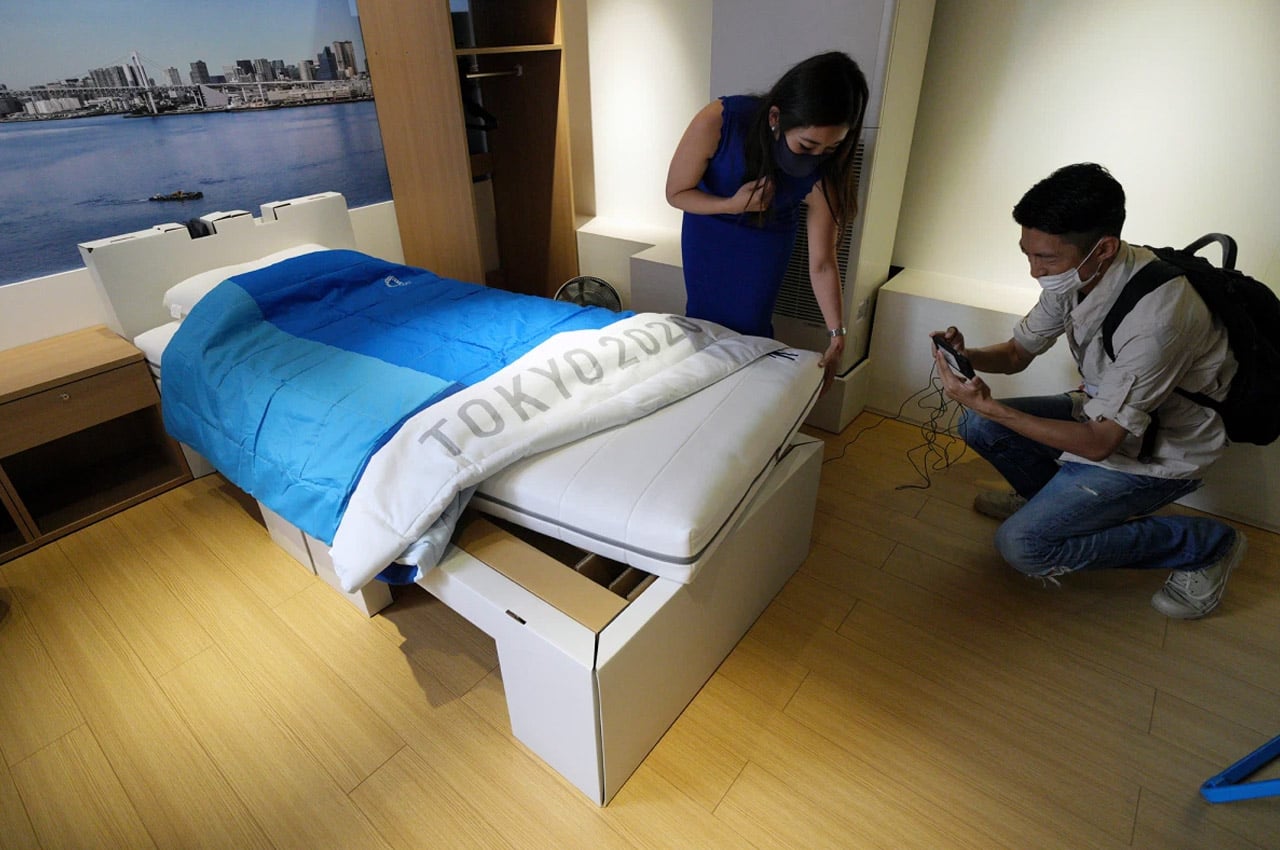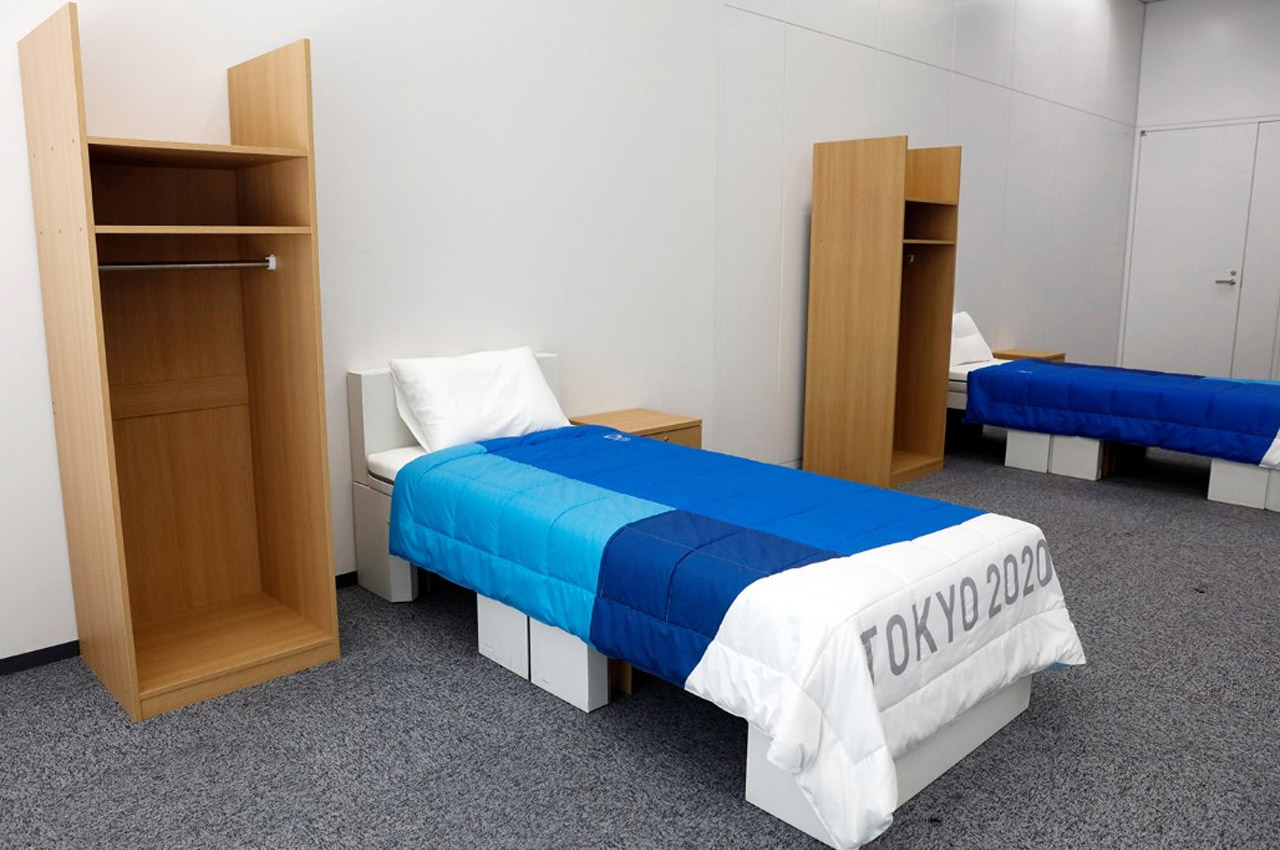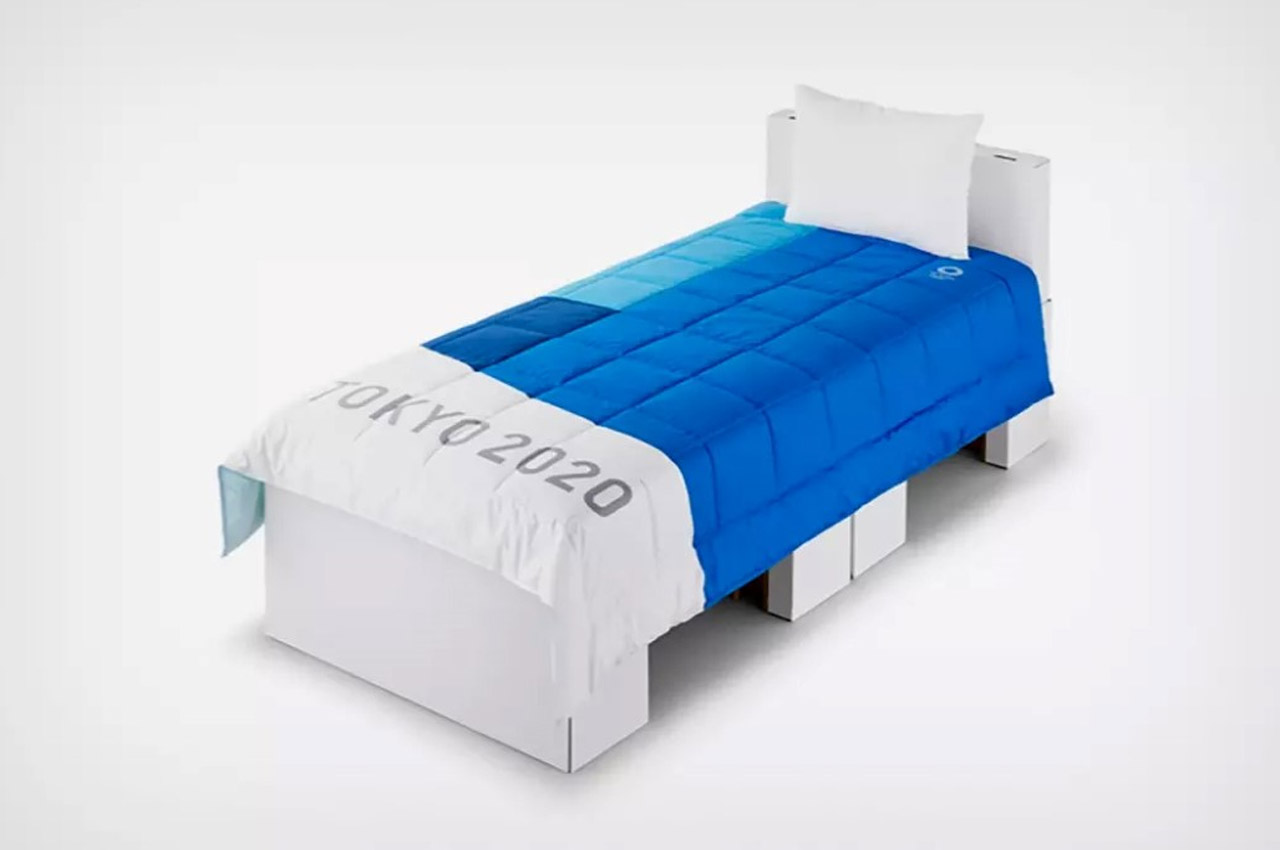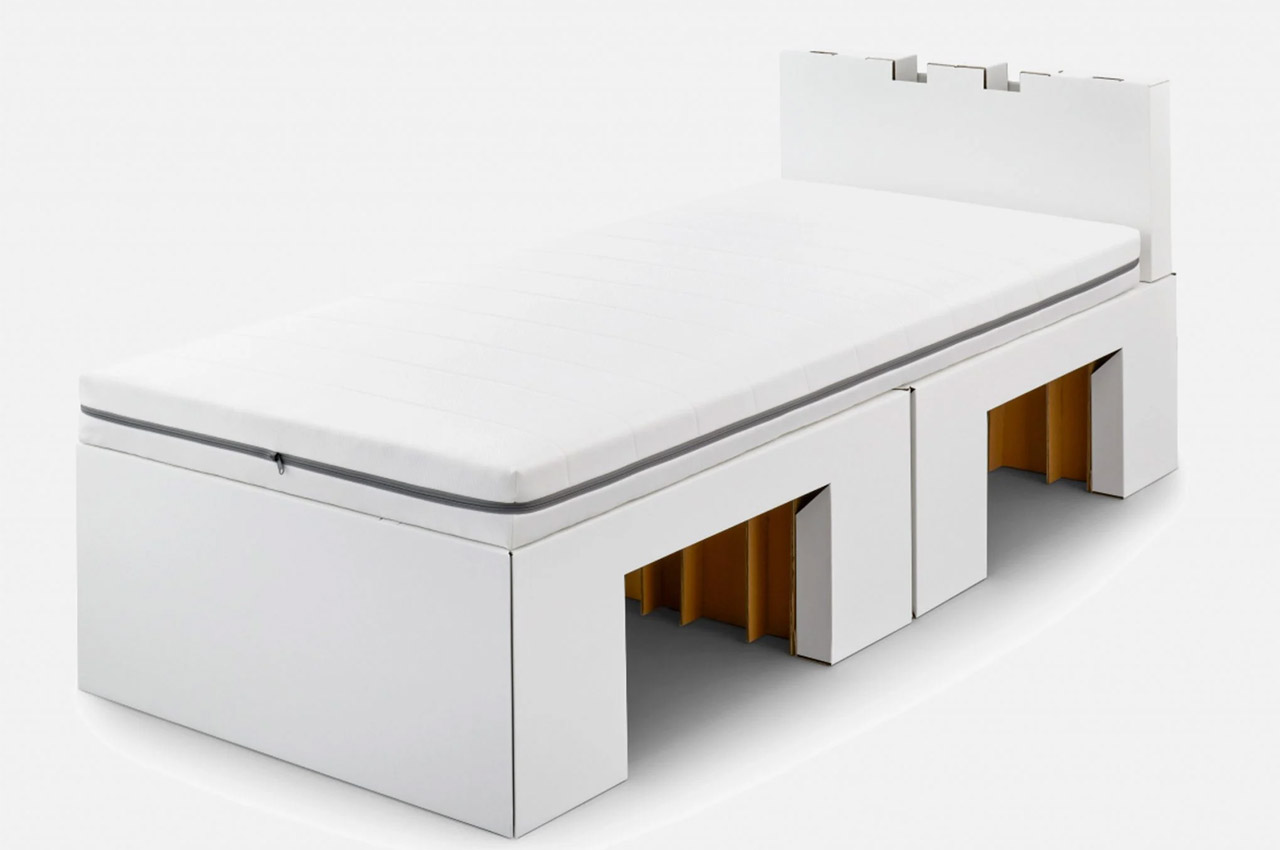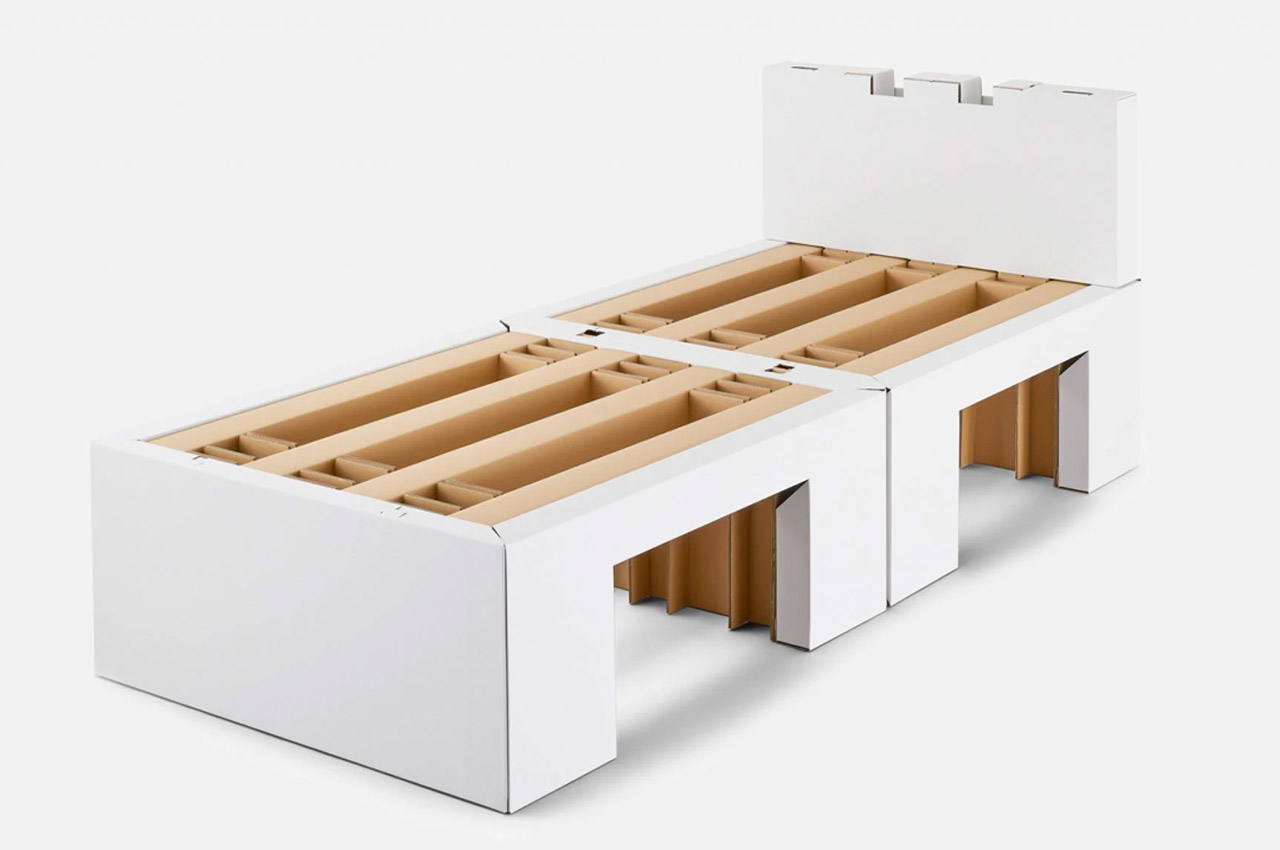Back in January 2020, when the interiors of the Olympic village were first unveiled, the sustainable low-carbon beds immediately grabbed attention. They weren’t your normal-looking beds, in fact, they looked a little more ‘recycled’ than usual; because they were. The Japanese had made it abundantly clear that they were going to focus on keeping the Olympics as environmentally friendly as possible. The medals would be made from recycled metal, the Olympic torch was fabricated from pipes previously used in temporary refugee housing during Japan’s deadly earthquake and tsunami in 2011. The beds in the Olympic village too, were crafted from high-resistance cardboard that could easily take on weights of up to 200 kilos… fine for one occupant, maybe not for two. Back then, the design was hailed as a champion of sustainability with a low carbon footprint. Now, it’s a critical design feature that’s helping keep athletes safe by being a social deterrent.
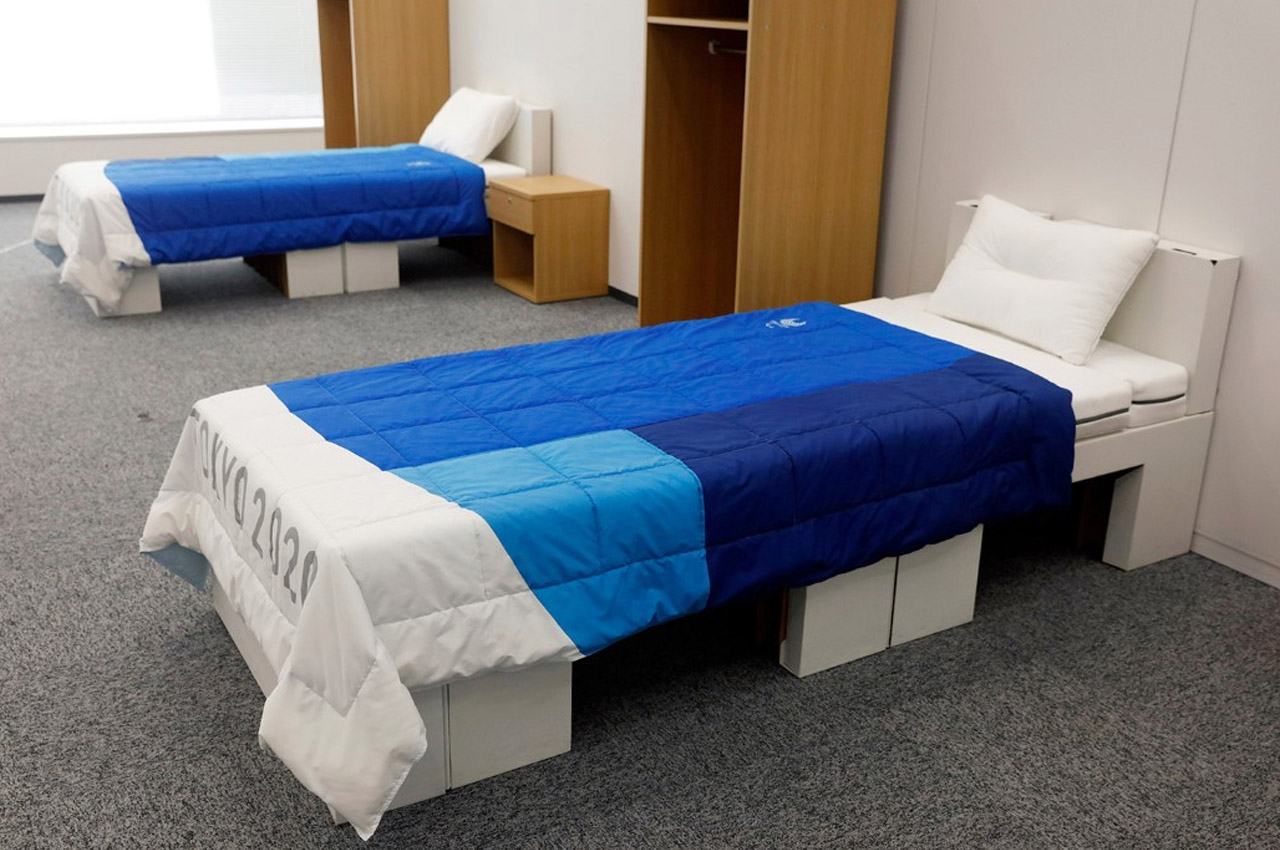
It’s not entirely clear where the rumor began, but like everything viral on the internet, the ‘anti-sex bed’ theory started somewhere on social media. It’s no secret that the Olympics are also an incredibly social event for the athletes, to put it mildly (type ‘Olympic village’ into a Google search bar, and the suggestion invariably recommends ‘condom’). While the beds aren’t “anti-sex” per-se, Tokyo officials seem to be pretty glad that athletes are a little thrown off by the fact that their beds are made of ‘cardboard’. As Japan is dealing with a coronavirus health crisis (much like the rest of the world), it just seems like common sense to not want the athletes to intermingle (2 athletes already tested positive with 21 more kept in isolation). That said, it seems like Airweave – the designers behind the cardboard bed and the recyclable mattress that goes on top of it – isn’t amused at people trolling their high-quality furniture. “Cardboard beds are actually stronger than the one made of wood or steel,” Airweave said in a statement!
Designer: Airweave for Tokyo 2020 Olympics
